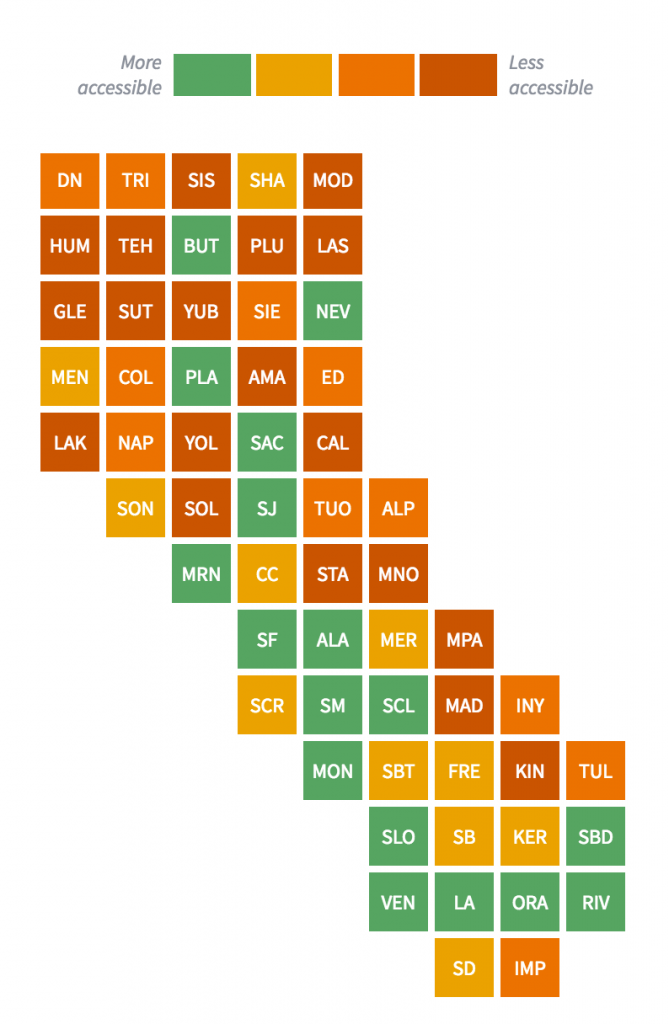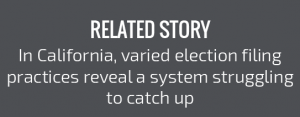Santa Clara County is one of just 17 counties in California that provide campaign finance records online in a form that is easy to analyze. Those records provide a glimpse of the political landscape of Silicon Valley.
The county first began requiring electronic filing of campaign contributions in mid-2014. But the data has limits. Before 2014, some groups filed electronically and others filed on paper, making it difficult to estimate how much was given before the electronic filing requirement.
Yet the available slice of campaign records — from the partial data from 2010 through 2014 and the complete records since — reveals spending patterns of two powerful groups in the Valley: businesses and unions.
On one side is ChamberPAC, a political action committee of the San Jose Silicon Valley Chamber of Commerce, a trade body that counts the likes of Apple, Google, IBM and other big businesses — and also small businesses — as its members.
Almost always on the other side is the South Bay Labor Council and its Committee on Political Education (COPE). The Council represents the interests of labor groups and the working-class population.
Both committees have raised more than $2.4 million since 2010 and have been driving forces in steering regulations toward their interests.
Key players give big
On the business side, big contributors include Hewlett Packard ($27,000), Xilinx and Applied Materials ($20,000) and eBay ($8,500). All told, ChamberPAC has raised at least $1.33 million since 2010.
Less than half of California counties put campaign finance filings online


“It is imperative that businesses get involved in local, state, or regional politics because decisions are being made that affect the regulatory environment under which they are going to operate,” said Matthew Mahood, CEO of San Jose Silicon Valley Chamber of Commerce.
The group spent $692,409 in 2010, out of which $283,508 was spent on supporting a San Jose city pension reform measure.
Some of the bigger races that the ChamberPAC funded go back to 2010 — when they successfully backed Mike Wasserman for county supervisor — and 2011 — when Jeff Rosen was elected as district attorney. Rosen’s win was the first time in more than 80 years that an incumbent was unseated.
The majority of the companies that engage with them at the local or regional level are established companies that understand the long-term effects of local government on the business community, Mahood said.
“If they are not at the table helping to shape who gets elected, then they can’t complain about what happens after that,” Mahood said.
ChamberPAC funded opposition to now District 2 Supervisor Cindy Chavez’s July 2013 candidature, giving $72,499. Chavez, a pro-labor leader, was the executive officer of the South Bay Labor Council and executive director of Working Partnerships, USA, a pro-labor nonprofit.
The South Bay Labor Council and its PAC, the Committee On Political Education is nearly always, the “other side” of political advocacy in Silicon Valley.
“We work on policies that raise the floor for working families… We also work on a variety of housing issues and issues related to organizing, particularly in the high-tech sector,” said Ben Field, executive of the Labor Council.
In 2014, the Council’s COPE raised $1.13 million and spent $866,159 backing multiple mayoral hopefuls for San Jose, school and county board candidates, and city council candidates in Mountain View, Santa Clara City and San Jose.
Field listed the minimum wage initiative in San Jose — which the chamber opposed —and a number of wins in elections at the Congressional and state levels, county board of supervisors, and council seats in San Jose and other cities as the their impact on Santa Clara politics.
Another labor union — the International Brotherhood of Electrical Workers — has also been active in the last two years. The IBEW 332 Issues Account—the PAC of the union—received $88,656 in contributions in 2015 from the IBEW Local 332.
The PAC spends money on political advertising, mailers and in support of ballot measures, said Sal Ventura, assistant business manager of IBEW 332.
Contributions to the issues account have increased. Filings show the IBEW 332 Issues Account received $72,304 in contributions in 2014.
Now, the union committee is stockpiling its cash reserves for the 2016 general election, increasing its cash balance by 56 percent from 2014 to 2015. Once union workers approve any shifts, money is sent elsewhere. The goal is to be of help both statewide and nationally, Ventura said.
Even with online data, gaps remain
The county provides a portal to download spreadsheets of campaign contributions, but the records are incomplete — 2002 is an empty table and 2003 has less than 50 rows of contributions.
Because electronic filing was not mandatory till 2014, such “missing” records are available only on paper in the county’s office.
There are also discrepancies in the data. In some cases, a teachers’ committee has been classified as an individual; in many others, contributions have not been put into any donor category (individual, committee, party). Employer names reported by donors are also inconsistent. Apple, for example, also appears as Apple Inc or Apple Computers.
This isn’t the first time the issue has been in the spotlight. In 2013, San Jose Inside, an online news portal, reported that details of Santa Clara’s “staggering campaign fundraising and spending” were not available online for public viewing in a timely manner, and had raised questions for the Fair Political Practices Commission.
(Homepage photo courtesy of Tracy Olson on Flickr via Creative Commons.)
